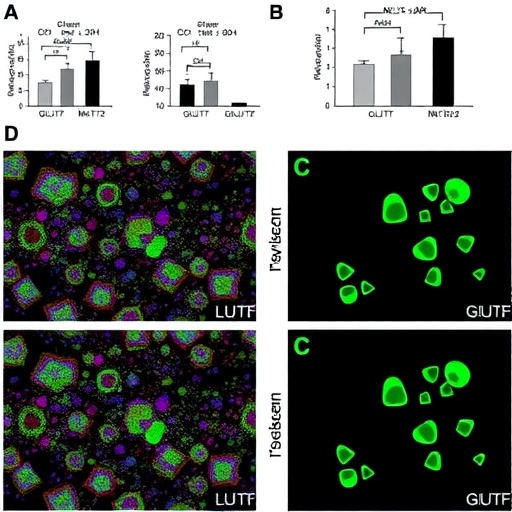A new federal mandate in the United States requires the increased awareness of breast density for women undergoing mammography, reflecting a significant shift in the approach to breast cancer screening. Every year, over 40 million women receive mammograms, and under this regulation, each of these women must be informed about their breast density. Breast density is not merely a medical term; it plays a critical role in both cancer detection and the overall risk assessment of breast cancer, making patient education more crucial than ever.
Breast density is determined by the ratio of fibrous and glandular tissue to fatty tissue in the breast, as displayed on a mammogram. Radiologists categorize breast density into four classifications: almost entirely fatty, scattered fibroglandular densities, heterogeneously dense, and extremely dense. The latter two categories are classified as dense breast tissue, affecting nearly half of all women. While dense breast tissue is a common and natural occurrence, it introduces complexities into cancer detection. This is particularly problematic since cancerous lesions can be obscured by dense tissue, apportioning greater responsibility to physicians to discuss breast density with their patients effectively.
The effects of breast density on mammography screening are one of the reasons for the new regulation. It is well-documented that dense breast tissues can obscure tumors, complicating detection. However, advancements in technology and imaging techniques have improved the odds of early detection. Digital mammography and 3D mammography, also known as digital breast tomosynthesis, have been shown to enhance cancer detection rates, especially in women with dense breasts. The effectiveness of these technologies is significant, as they can uncover about 77% of breast cancers in women with dense tissues—a promising statistic in the ongoing battle against breast cancer.
Despite these advancements, the relationship between breast density and cancer risk requires careful consideration. It’s essential to understand that just because a woman has dense breast tissue does not automatically push her into a high-risk category. Research suggests that for women in their 40s with dense breasts, the risk of developing breast cancer is comparable to that of having a second-degree relative, such as an aunt or grandmother, who has faced the disease. Most women with dense breast tissue are still classified as average risk. The distinction is critical; it underlines that clinicians should adopt a multifactorial approach to evaluating a patient’s risk profile, one that incorporates genetics and personal medical history alongside breast density.
When it comes to assessing breast cancer risk, various tools may assist healthcare providers. Models such as the Tyrer-Cuzick model, the Breast Cancer Risk Assessment Tool, and the Breast Cancer Surveillance Consortium Risk Calculator are invaluable for predicting an individual’s lifetime risk for developing breast cancer. By integrating models and technology, clinicians can move toward more personalized medicine, allowing for tailored screening recommendations based on individual risk profiles.
Still, the benefits of supplemental screening come with caveats. While earlier detection can improve clinical outcomes, additional testing carries its own risks, such as anxiety and financial strain. False-positive results can lead to unnecessary biopsies and subsequent emotional turmoil for patients. Moreover, detecting indolent cancers—tumors that do not pose an immediate threat to health—may lead to overtreatment, creating additional stress for women who might otherwise be asymptomatic.
Breast density awareness has broader implications for the healthcare system and patient outcomes long-term. Successful implementation of these federal mandates requires collaboration among physicians, patients, and healthcare institutions. Clear communication channels must be established, ensuring that women are not simply informed about their breast density status, but are educated about its significance to their overall health and screening choices.
What’s increasingly apparent is that breast density does not exist in a vacuum—it interacts with various elements of a patient’s health history, genetic background, and lifestyle factors. Therefore, understanding breast density is merely a piece of a much larger puzzle in the breast cancer screening landscape. As clinicians navigate these conversations, they must prioritize the notion that breast health is informed not just by physical examinations and imaging but by a holistic view of an individual’s health status.
In practice, this mandates combining awareness of breast density with a woman’s total risk profile when discussing screening and preventive options. Dr. Joann Elmore underscores this sentiment, emphasizing the necessity of integrating breast density information into broader health discussions, aiding patients in making informed decisions about their health trajectories. The goal is a more educated patient population, empowered to take charge of their health through informed dialogue with healthcare providers.
Ultimately, as awareness increases through mandates and education, a two-way communication strategy must become entrenched in the language of patient care. Clinicians are tasked not only with delivering information but also with fostering an environment where questions are welcomed, and discussion is encouraged. Establishing this rapport can facilitate a better understanding and an overall more effective breast cancer screening strategy moving forward.
The landscape of breast cancer awareness continues to evolve. With each increment of knowledge shared, the hope is that each woman walks away from her mammography appointment with not just the assurance of her breast tissue classification but with the tools needed to engage in meaningful discussions about her health.
Subject of Research: Breast Density and Breast Cancer Detection
Article Title: New Federal Mandate Enhances Awareness of Breast Density Among Women Undergoing Mammography
News Publication Date: October 2023
Web References:
References:
Image Credits:
Keywords: Breast cancer, breast density, mammography, screening, risk assessment, supplemental screening, patient education.
Tags: breast cancer risk assessmentbreast density awarenesscommunication strategies for cliniciansdense breast tissue implicationsfederal mandate on mammographyimpact of breast density on cancer detectionmammogram guidelines for womennavigating breast cancer screening regulationspatient education on breast cancerradiology classifications of breast densityunderstanding fibroglandular tissuewomen’s health and mammography





